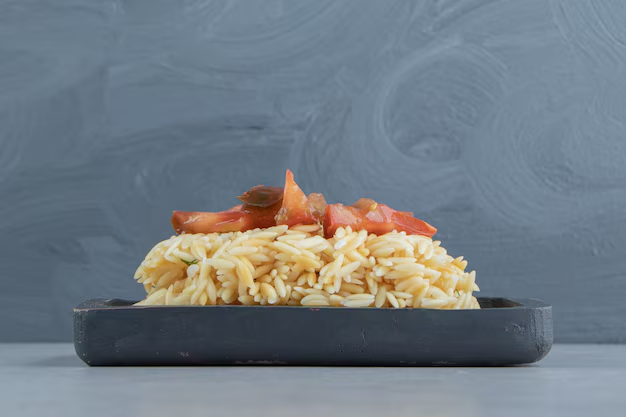How Long Is Cooked Rice Safe in the Refrigerator? A Complete Guide
Cooked rice is a staple in many households around the world, beloved for its versatility and ease of preparation. Whether you're a fan of sushi, stir-fry, or rice pudding, understanding how to properly store cooked rice is essential to ensure both safety and taste. But how long can you actually keep cooked rice in the refrigerator? Let’s delve into this common kitchen query to keep your meals safe and delicious.
🕰️ Understanding the Shelf Life of Cooked Rice
Cooked rice, like any other perishable food item, has a limited shelf life. Proper storage is key to extending its usability and keeping it safe to eat. Generally, rice stored in the refrigerator is safe for about 3 to 5 days. However, this can depend on various factors such as the initial cooking method and storage conditions.
Factors Affecting Rice Shelf Life
Cooking Method: The way rice is cooked can affect how long it lasts. Whether boiled, steamed, or cooked in a rice cooker, each method produces slightly different moisture levels that can influence shelf life.
Storage Temperature: Temperature plays a crucial role in preserving food. Cooked rice should be stored in a refrigerator at or below 40°F (4°C).
Storage Containers: Airtight containers help reduce exposure to air, minimizing the risk of bacterial growth and preventing the rice from drying out.
🌡️ Best Practices for Storing Cooked Rice
To ensure your rice remains safe to eat and retains its flavor, follow these storage tips:
Cool It Down: Allow rice to cool to room temperature before placing it in the fridge. This helps prevent condensation, which can create an environment for bacteria to thrive.
Airtight Storage: Use airtight containers or resealable plastic bags to minimize exposure to air.
Label and Date: Label your containers with the date to keep track of how long the rice has been stored.
Refrigerate Promptly: Place rice in the refrigerator within two hours of cooking to prevent bacterial growth.
📝 Quick Tips for Storing Rice Properly:
- 🚫 Avoid leaving cooked rice at room temperature for extended periods.
- ❄️ Freezing is a great alternative if you don’t plan to eat the rice within a few days.
- 💧 Add a tablespoon of water and reheat covered to restore moisture to rice when reheating.
🧪 The Science Behind Food Safety: Bacillus cereus
Understanding food safety is crucial when dealing with cooked rice. One of the main concerns is the bacteria Bacillus cereus, which can lead to food poisoning if rice is improperly stored.
How Bacillus cereus Thrives:
- Spores: These bacteria form spores that can survive cooking temperatures.
- Growth Conditions: Once rice cools to room temperature, spores can germinate and multiply.
Safe Eating Practices:
- Reheat Thoroughly: Make sure rice is steaming hot before consumption.
- Discard If Doubtful: If rice smells off or appears unusual, it’s safer to discard it.
📦 Freezing Cooked Rice for Extended Storage
If you're not planning to eat your cooked rice within the usual 3 to 5 days, freezing is an excellent option. Here’s a simple guide to freezing and reheating rice:
Steps for Freezing Rice:
- Cool Quickly: Use a shallow container to cool rice rapidly.
- Portion Control: Freeze in portions you plan to consume in one sitting.
- Use Zip Bags: Remove air from zip-lock bags before sealing to prevent freezer burn.
- Label Clearly: Note the date and contents on each bag.
Reheating Frozen Rice:
When ready to eat, reheat the rice directly from frozen in a steamer, microwave, or on a stovetop. Adding a few tablespoons of water helps restore the rice's moisture content.
🍲 Versatile Uses for Leftover Rice
Storing rice efficiently opens up a world of culinary possibilities. Here are some delightful ways to use your leftover rice:
- Fried Rice: A classic dish perfect for incorporating leftovers and reducing food waste.
- Rice Porridge: Comforting and easy to digest, ideal for breakfast or a light meal.
- Rice Pudding: Sweeten up your rice for a decadent dessert option.
Culinary Creativity:
- 🌿 Spice it up: Mix herbs and spices to transform plain rice into a flavorful dish.
- 🌮 Experimentation: Use as a base in tacos, burritos, or Buddha bowls.
🚦 Indicator of Spoiled Rice
Consuming spoiled rice can lead to discomfort or illness, so keep an eye out for signs of spoilage:
- Sour Smell: A strong odor is one of the first indicators.
- Change in Texture: Slimy or overly dry rice may point to spoilage.
- Mold Growth: Visible mold is an immediate sign the rice should be discarded.
📝 Summary and Key Takeaways
To help you maintain safety and quality, here's a handy summary of key practices and tips:
- 🕰️ 3-5 Days: Typical refrigerated shelf life for cooked rice.
- 🌡️ Quick Cooling: Cool rice quickly to prevent bacterial growth.
- ❄️ Freeze for Longevity: Freeze rice for extended storage beyond five days.
- 🍳 Reheat Correctly: Always reheat rice until steaming hot.
- ⚠️ Spoilage Signs: Sour smell, sliminess, or mold means discard it.
By following these guidelines, you can make the most out of your cooked rice, ensuring it remains safe to eat and delicious. With careful storage and mindful consumption, you'll get the best out of this versatile grain. Enjoy your meals with peace of mind and a dash of culinary creativity! 🍚
